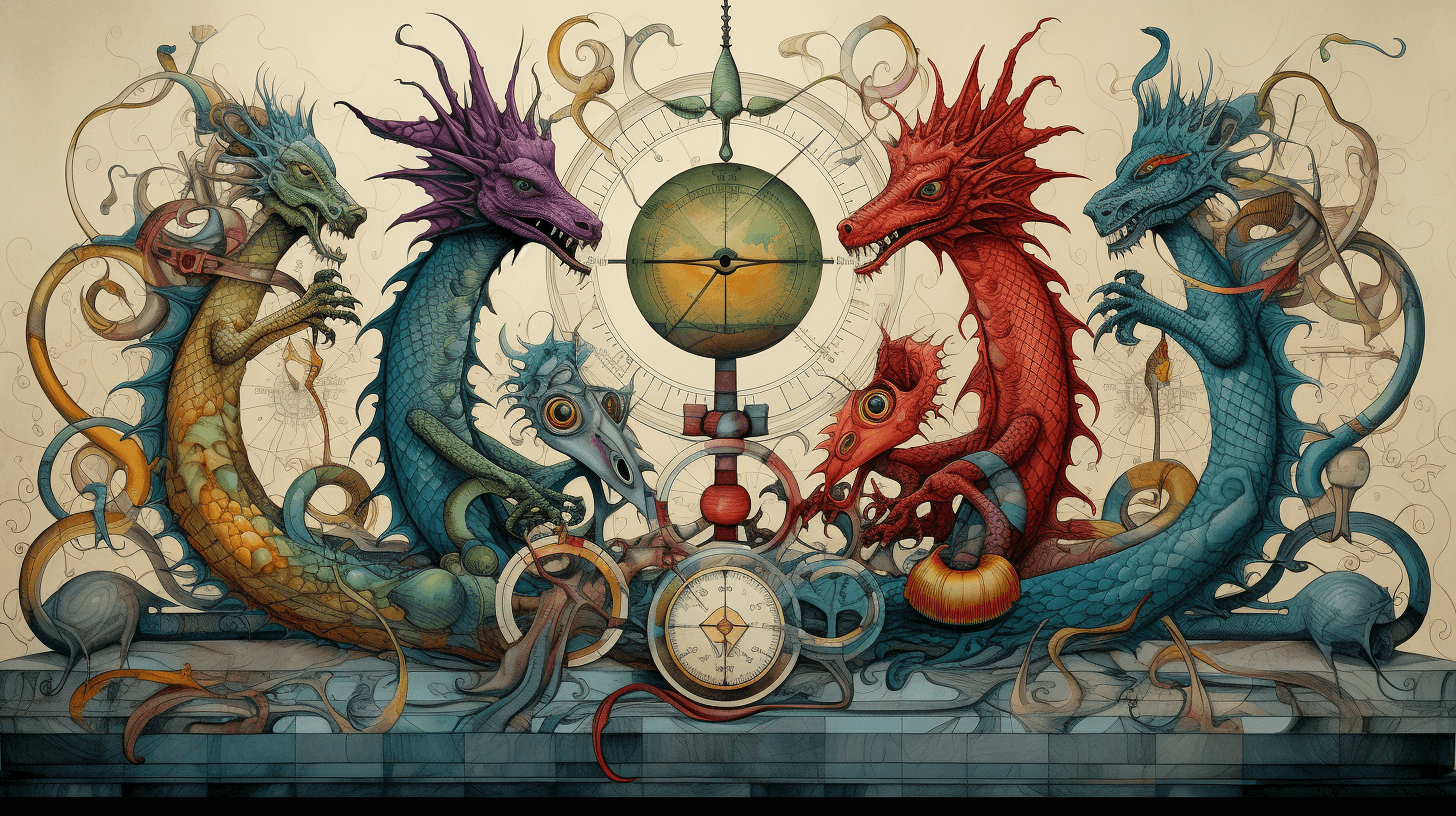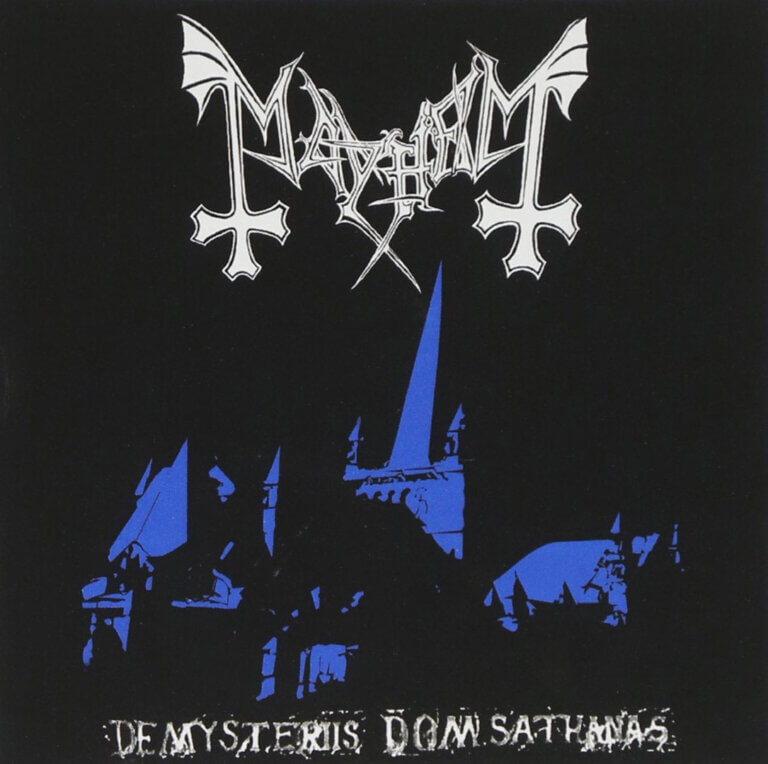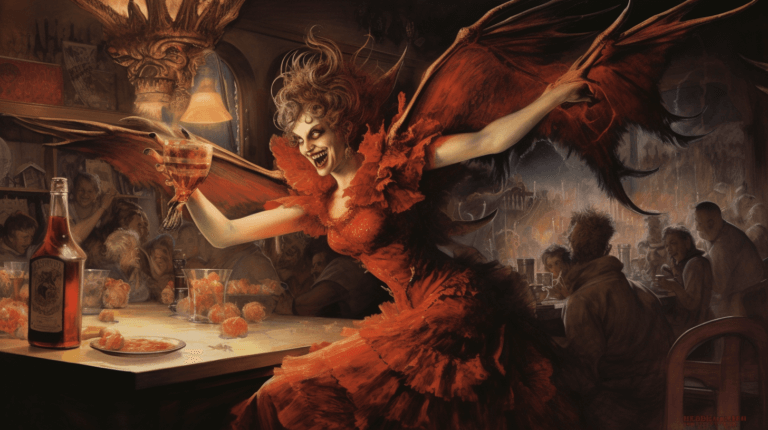Dragons in Alchemy
Dragons are a common symbol in alchemy, representing the four elements of earth, air, fire, and water. They are also associated with the process of transmutation, the alchemist’s quest to turn base metals into gold.
In alchemical symbolism, the dragon is often depicted as a serpent with wings. This represents the combination of the two opposing principles of the material world: the solidity of the serpent and the volatility of the wings. The dragon is also often shown guarding a treasure, which represents the alchemist’s goal of finding the Philosopher’s Stone.
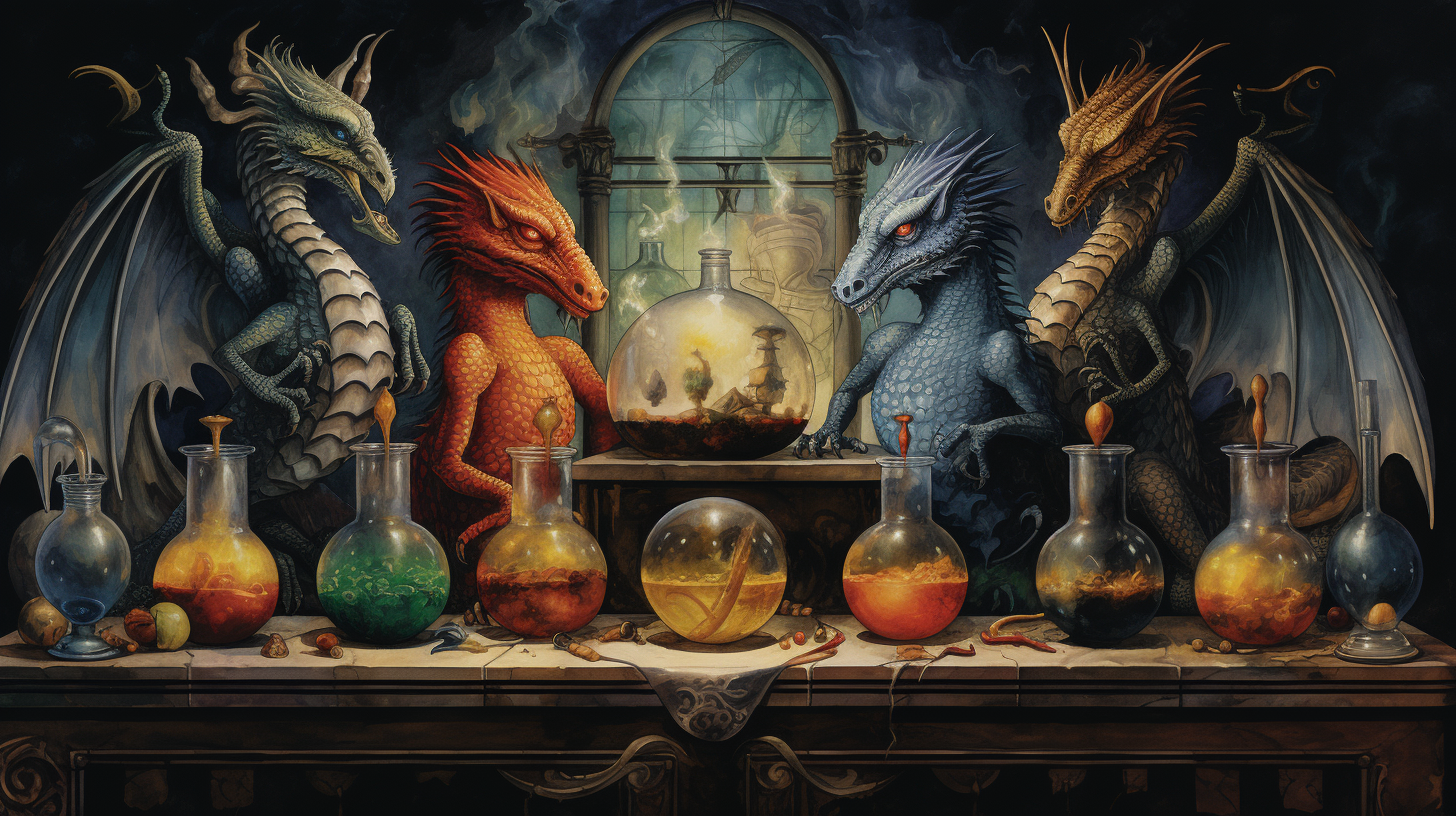
The four elements are represented by the four types of dragons:
- The earth dragon is the most common type of dragon. It is depicted as a large, serpentine creature with scales and horns. The earth dragon represents the element of earth, which is associated with stability, permanence, and materiality.
- The air dragon is a smaller, more agile creature with feathered wings. The air dragon represents the element of air, which is associated with change, movement, and intellect.
- The fire dragon is a fiery creature with a long tail and sharp claws. The fire dragon represents the element of fire, which is associated with passion, transformation, and purification.
- The water dragon is a large, aquatic creature with a long neck and flippers. The water dragon represents the element of water, which is associated with emotion, intuition, and the unconscious.
The dragon is a powerful symbol in alchemy, representing the alchemist’s quest for knowledge and transformation. It is a reminder that the material world is not as solid as it seems, and that change is possible.
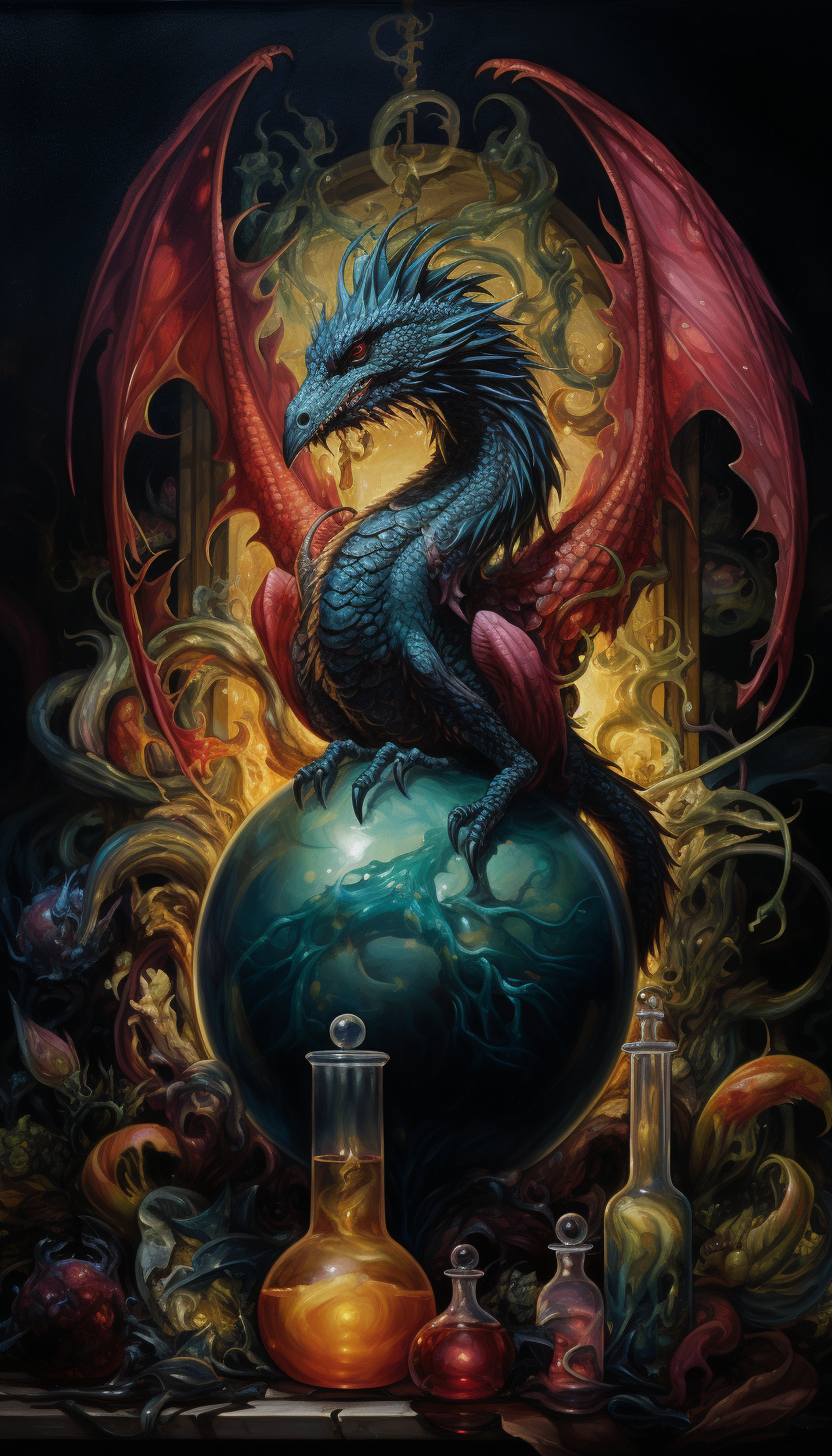
The Dragon and the Philosopher’s Stone
In alchemy, the dragon is often associated with the Philosopher’s Stone. The Philosopher’s Stone is a mythical substance that alchemists believed could turn base metals into gold. It was also said to have the power to cure diseases and extend life.
The dragon is often depicted guarding the Philosopher’s Stone. This represents the difficulty of finding and obtaining the Philosopher’s Stone. The alchemist must undergo a long and difficult journey, facing many challenges and obstacles.
The dragon is also a symbol of the alchemist’s own inner demons. The alchemist must face their own fears and doubts in order to succeed.
The alchemist who is able to slay the dragon and obtain the Philosopher’s Stone is said to have achieved enlightenment. They have gained the knowledge and power to transform themselves and the world around them.
Here are some additional details about the symbolism of dragons in alchemy:
- The dragon’s tail represents the alchemical process, which is cyclical in nature.
- The dragon’s wings represent the soul, which is said to be able to fly to the heavens.
- The dragon’s scales represent the physical body, which is said to be the prison of the soul.
- The dragon’s fire represents the transformative power of alchemy.
The Dragon in Modern Culture
The dragon is a popular symbol in modern culture, appearing in movies, books, and video games. It is often depicted as a fearsome creature, but it can also be seen as a symbol of strength, courage, and power.
The dragon is a reminder that we are all capable of great things. If we are willing to face our fears and challenges, we can achieve anything we set our minds to.

